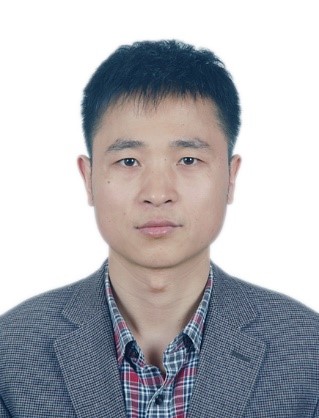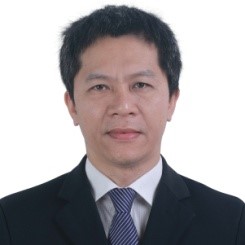
Speakers
Prof. Jianquan Ouyang(Deputy Dean), Xiangtan University, China
欧阳建权教授,湘潭大学
湖南省二级教授
Ouyang Jianquan, Ph.D., Second-level professor of Hunan Province, doctoral supervisor, visiting scholar at the University of Georgia, U.S.A. He was selected as the third-level candidate of Hunan Province New Century 121 Talent Project in 2011. He was selected as the 2019-2020 Hunan Province "Three Districts" Talent Support Program. He was awarded the China Industry-University-Research Cooperation Promotion Award in 2019. He was awarded the Baosteel Education Award and the first outstanding science and technology worker in Xiangtan City in 2018. He was awarded the third prize of Hunan Province Natural Science in 2010. He was awarded the second prize of Hunan Province Teaching Achievement in 2013 and the second prize in 2016 and 2019. In 2014, he won the third prize of excellent achievements in educational scientific research in Hunan Province. In 2018, he won the national prize of teaching innovation in artificial intelligence and big data education in colleges and universities. In 2020, 2021,2022 and 2023, he won the "Outstanding Contribution Award" for Artificial Intelligence Big Data Blockchain Education in National Universities. In 2007, he was selected as the training object of young backbone teachers in general colleges and universities in Hunan Province. He is a senior member of China Computer Federation (CCF) and a liaison of Xiangtan University, a correspondent member of CCF Youth Working Committee, a member of CCF Education Working Committee, a correspondent member of CCF Big Data Expert Committee, a standing member of CCF Computer Application Professional Committee, a member of CCF Computer Vision Professional Committee, a member of CCF Pervasive Computing Professional Committee, a member of YOCSEF ( Young Computer Science and Technology Forum of Chinese Computer Society) Changsha Sub-Forum 2015-2016 Chair, Executive Member of CCF Changsha Member Center, Senior Member of Chinese Society of Artificial Intelligence.
Speech Title: English:judicial Few-shot named entity recognition
Abstract:
In the continuous development of judicial reform in China, intelligence has become the key to improving the efficiency and quality of justice. This requires to be able to intelligently extract key legal elements and trial information from legal texts such as court records and referee documents. However, the specificity and sensitivity of legal texts make the acquisition of high-quality labeled data difficult, which in turn limits the improvement of model performance. Therefore, few shot named entity recognition technique has emerged, aiming to improve the performance of entity recognition with limited labeled data. We propose two methods for the problem of few shot named entity recognition in the judicial domain. Both methods achieve significant performance improvement on both public and judicial datasets.
Prof. Shuwen Xu, Xidian University, China
许述文教授,西安电子科技大学
IEEE Senior Member
PhD, Professor, Doctoral Supervisor, has been engaged in research related to detection and perception for a long time, and has been selected as a national high-level talent as well as a provincial talent. At present, he is the Deputy Director of the National Key Laboratory of Radar Signal Processing at Xi'an University of Electronic Science and Technology, the Deputy Director of the National Information Perception Collaborative Innovation Center, and the leader of the Shaanxi Province Youth Innovation Team.He is currently a senior member of IEEE, serving as an editorial board member for journals such as Journal of Systems Engineering and Electronics.He published and accepted over 100 academic papers, 1 monograph, and granted 20 patents.
Speech Title: Marine Small Floating Target Detection Method Based on Fusion Weight and Graph Dynamic Attention Mechanism
Abstract:
Sea surface target detection with graph neural net works (GNNs) is an emerging method. However, the correlation information of radar returns cannot be efficiently exploited by the conventional graph convolutional network (GCN). Therefore, this article proposes a small floating target detection method based on a graph attention network (GAT) with spatiotemporal correlation of clutter maps, and designs fusion weighting and dynamic attention mechanism for practical problems. First, the dwell radar data are modeled as a graph structure according to its spatio-temporal information. The proposed graph structure allows Doppler spectra of same-type samples to be accumulated separately for sea clutter and target returns. Then, we propose a GAT-based detector and optimize it to create variants: GATv2, GAT-Fused, and GATv2-Fused. These vari ants aim to reduce sea spike interference and jointly utilize spatiotemporal clutter map information and feature correlation. Both measured and simulated data demonstrate that the pro posed attention-based detectors effectively identify marine small f loating targets, including out-of-distribution (OOD) detection, outperforming conventional feature-based detectors, the GCN detector, and the pure GAT detector.

Prof.Yongwei Huang, Guangdong University of Technology, Hong Kong, China
黄永伟教授,广东工业大学
IEEE Senior Member
Dr. Yongwei Huang (Senior Member, IEEE) is currently a full professor with the School of Information Engineering, the Guangdong University of Technology, Guangzhou, China, which he joined in 2016. Prior to the position, he held a faculty position with the Hong Kong Baptist University, and several research appointments, namely, with the Hong Kong University of Science and Technology, the Chinese University of Hong Kong, and the University of Naples “Federico II,” Italy. His research interests include optimization theory and algorithms, signal processing and machine learning, array signal processing and beamforming, and signal processing for wireless communications and radar, as well as financial signal processing. He has been an Associate Editor for the IEEE Transactions on Signal Processing (since May 2024), and an Associate Editor for the IEEE Transactions on Signal and Information Processing over Networks (since July 2021). He was a member of “Sensor Array and Multichannel Signal Processing” Technical Committee (2017-2022) of IEEE Signal Processing Society, a Handling Editor for the Elsevier Signal Processing (June 2020 - June 2024), an Associate Editor for the IEEE Signal Processing Letters (July 2016 - June 2020), and a recipient of Best Poster Award in the 2007 Workshop on Optimization and Signal Processing.
Speech Title: Convex Optimization-based Nonconvex Robust Adaptive Beamforming Design Problems
Abstract:
In this talk, we present a formulation of the robust adaptive beamforming (RAB) problem based on worst-case signal-to-interference-plus-noise ratio (SINR) maximization with a nonconvex uncertainty set for the steering vectors. The uncertainty set consists of a similarity constraint and a (nonconvex) double-sided ball constraint. This problem clearly is nonconvex. To tackle it, the worst-case SINR maximization problem is turned into a quadratic matrix inequality (QMI) problem using the strong duality of semidefinite programming. Then a linear matrix inequality (LMI) relaxation for the QMI problem is proposed, with an additional valid linear constraint. Necessary and sufficient conditions for the tightenedLMIrelaxation problem to have a rank-one solution are established. When the tightened LMI relaxation problem still has a high-rank solution, the LMI relaxation problem is further restricted to become a bilinearmatrix inequality (BLMI) problem.We then propose an iterative algorithm to solve the BLMI problem that finds an optimal/suboptimal solution for the original RAB problem by solving the BLMI formulations. Finally, simulation examples are presented to showcase the improved array output SINR of the proposed robust beamformer.

Prof. Tao Lei, Shaanxi University of Science and Technology, China
雷涛教授,陕西科技大学
IEEE Senior Member
Tao Lei, a third-level professor and doctoral supervisor at Shaanxi University of Science and Technology, serves as a member of the Academic Committee of the University, Vice Dean of the School of Electronic Information and Artificial Intelligence, and a senior member of IEEE/CCF/CSIG. He is selected as a high-level talent in Shaanxi Province, a Shaanxi Province Distinguished Youth, listed among the top 2% of global scientists by Stanford, and recognized as a highly contributing author by Wiley China Open Science. He serves as associate editor, editorial board member, and guest editor for seven journals, and has held positions such as general chair, technical committee chair, publicity chair, awards committee chair, and session chair at more than 20 international conferences. His primary research interests lie in computer vision, machine learning, etc. He has authored or co-authored four monographs and conference proceedings, with over 100 papers published in prestigious domestic and international journals and conferences such as IEEE TIP, IEEE TMI, IEEE TFS, IEEE TGRS, and IJCAI. Among them, six papers are highly cited according to ESI, with over 4300 citations on Google Scholar. He has led projects funded by the National Natural Science Foundation of China (5 projects), Shaanxi Province Outstanding Youth Fund, Shaanxi Province Key R&D Program, etc. He has been awarded the second prize for Scientific and Technological Progress in Shaanxi Province and the first prize for outstanding research achievements in higher education institutions in Gansu Province as the first author.


